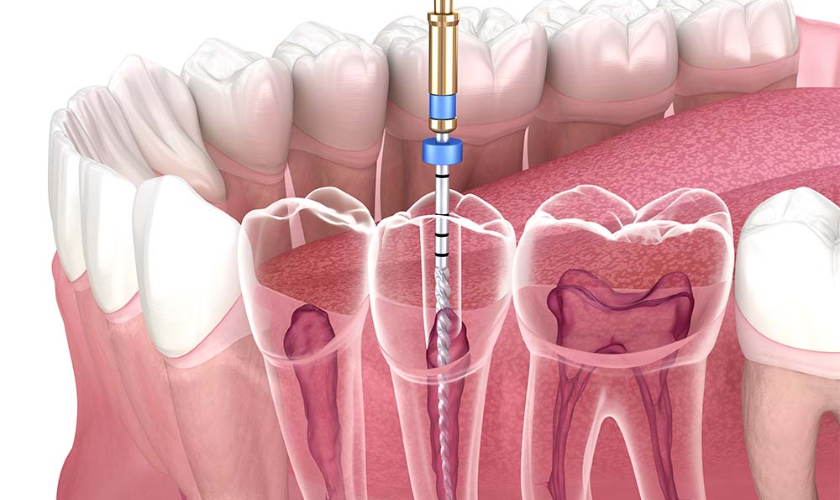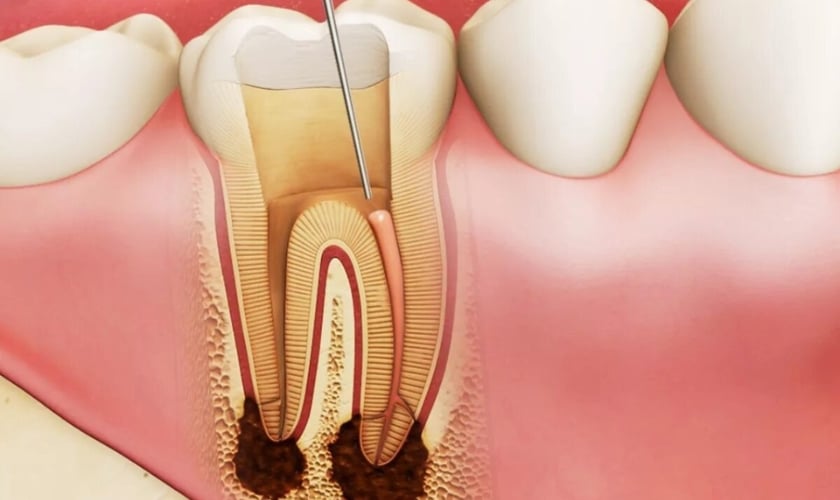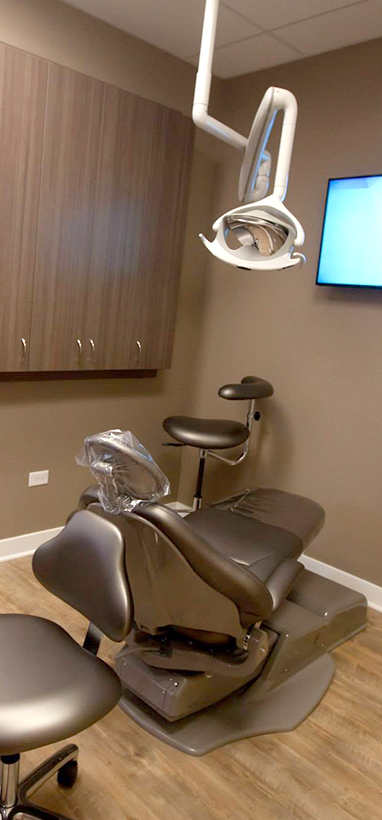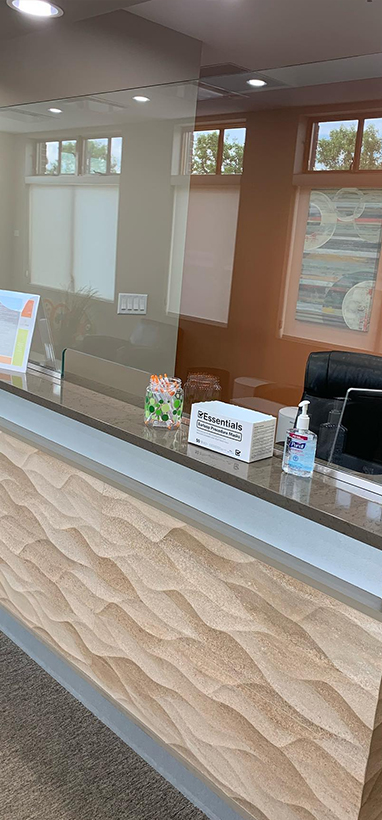1516 Legacy Cir, Naperville, IL 60563
How to Manage Pain After a Root Canal Procedure?
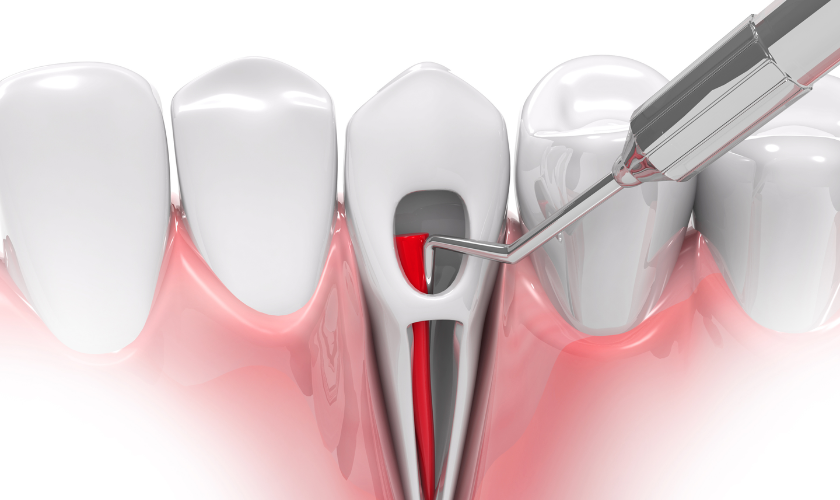
Ah, the root canal. It is a necessary dental procedure that tackles toothaches at its source, but its reputation often precedes it. While some discomfort following a root canal is normal, it shouldn’t derail your recovery. Here’s the good news: with a little know-how and some handy tips, you can effectively manage post-root canal pain and get back to smiling brightly in no time.
Understanding Root Canal Discomfort
Following a root canal, it’s normal to experience some temporary discomfort as your body heals. This discomfort arises because the procedure involves removing the inflamed pulp (inner chamber) of your tooth, which can irritate the surrounding tissues. Here’s a breakdown of the potential discomforts and what to expect:
Tenderness: The treated tooth and surrounding gum area might feel tender, especially when applying pressure during activities like chewing or brushing. This tenderness is similar to a bruise and should gradually improve.
Discomfort: You may experience a dull ache or throbbing sensation in the treated tooth. This discomfort can range from mild to moderate and is usually manageable with over-the-counter pain relievers recommended by your Naperville dentist.
Sensitivity: Increased sensitivity to hot and cold temperatures is a common occurrence for a few days following the procedure. This sensitivity happens because the nerves responsible for temperature perception can be temporarily irritated during the treatment.
Other Potential Discomforts: In some cases, you might experience slight swelling or bruising in the gums near the treated tooth. This is usually temporary and can be alleviated with cold compresses.
Effective Pain Management Strategies
Now that you’ve faced the root of the problem (pun intended!) let’s delve into powerful strategies to conquer post-root canal discomfort and promote a smooth healing journey:
Over-the-Counter Painkillers
- Your dentist’s guidance is key: They’ll recommend the most suitable pain relievers, like ibuprofen or acetaminophen, based on your individual needs and medical history.
- Dual action relief: These medications not only reduce inflammation but also alleviate pain, giving you double the comfort.
- Dosage matters: Follow instructions carefully to avoid over-medication. If pain persists beyond a reasonable timeframe, consult your dentist for further guidance.
The Magic of Ice
- Your post-procedural BFF: Ice is a natural champion at reducing swelling and numbing discomfort.
- Targeted application: Wrap an ice pack in a thin cloth and apply it gently to the outside of your cheek, near the treated tooth, for 15-20 minute intervals.
- Repeat for relief: Repeat this process every few hours, especially during the first 24-48 hours, to experience continuous relief.
The Soothing Power of Saltwater Rinses
- Natural and effective: Warm saltwater rinses offer a gentle yet powerful way to reduce inflammation and promote healing by eliminating bacteria.
- DIY healing solution: Dissolve a teaspoon of table salt in a glass of warm water.
- Soothing swishes: Gently swish the solution for 30 seconds, several times a day, to experience the calming effects.
Gentle Does It: Brushing and Flossing
- Brush with care: Use a soft-bristled brush and brush your teeth gently, paying special attention to the treated area to remove any lingering bacteria.
- Flossing finesse: Flossing around the treated tooth is crucial to remove food particles, but be extra careful to avoid irritating the sensitive area.
Choose Your Food Wisely
- Soft food sanctuary: Stick to soft, easily chewable foods like yogurt, mashed potatoes, and soups for the first few days after your root canal.
- Strategic chewing: Avoid chewing on the treated tooth altogether. Opt for softer foods on the opposite side of your mouth to prevent further irritation.
- Gradual reintroduction: As your sensitivity subsides, gradually reintroduce harder foods back into your diet.
Elevate for Optimal Healing
- Head in the clouds (for a reason): Sleeping with your head elevated on extra pillows helps reduce swelling and discomfort after your procedure.
- Improved drainage: This position promotes better drainage of fluids from the treated area, minimizing pressure and promoting healing.
- Sweet dreams, sweet relief: Get a good night’s sleep with the help of proper head elevation.
Manage Stress for Enhanced Comfort
Stress can worsen your perception of pain. Engage in activities that promote relaxation, such as meditation, deep breathing exercises, or listening to soothing music. By managing stress, you can create a more favorable environment for healing and reduce the overall pain experience.
Bonus Tip: The Temporary Crown and Aftercare
Following your root canal, a temporary crown is often placed on the treated tooth to shield it from further damage and exposure while your permanent crown is being created. Here are some key points to remember when caring for your temporary crown:
Food Choices: Avoid chewing on hard or sticky foods like nuts, hard candy, chewy candies, caramel, apples, carrots, or raw vegetables. These foods can put stress on the temporary crown, potentially causing it to crack, dislodge, or come loose. Opt for softer foods like yogurt, soups, cooked vegetables, and pasta during this time.
Biting with Caution: Be mindful and avoid using excessive force when biting down. The temporary crown is not as strong as a permanent crown and might not withstand the pressure of hard foods.
Sensitivity and Discomfort: It’s normal to experience some mild sensitivity or discomfort after having a temporary crown placed. This discomfort should subside within a few days. Over-the-counter pain relievers like ibuprofen or acetaminophen can help manage the discomfort if needed.
Loose or Lost Crown: If your temporary crown feels loose, loosens completely, or falls out, contact your dentist immediately. Refrain from attempting to reattach the crown yourself. Your dentist Naperville will need to assess the situation and determine the best course of action, which might involve receiving the temporary crown or fabricating a new one.
By following these tips and listening to your body, you can effectively manage post-root canal pain and ensure a smooth recovery. Remember, open communication with your dentist is vital. Don’t hesitate to reach out if you experience any concerning symptoms or have questions about your post-procedure care. With a little planning and the right strategies, you can conquer root canal discomfort and get back to enjoying pain-free smiles.
Ah, the root canal. It is a necessary dental procedure that tackles toothaches at its source, but its reputation often precedes it. While some discomfort following a root canal is normal, it shouldn’t derail your recovery. Here’s the good news: with a little know-how and some handy tips, you can effectively manage post-root canal pain and get back to smiling brightly in no time.
Understanding Root Canal Discomfort
Following a root canal, it’s normal to experience some temporary discomfort as your body heals. This discomfort arises because the procedure involves removing the inflamed pulp (inner chamber) of your tooth, which can irritate the surrounding tissues. Here’s a breakdown of the potential discomforts and what to expect:
Tenderness: The treated tooth and surrounding gum area might feel tender, especially when applying pressure during activities like chewing or brushing. This tenderness is similar to a bruise and should gradually improve.
Discomfort: You may experience a dull ache or throbbing sensation in the treated tooth. This discomfort can range from mild to moderate and is usually manageable with over-the-counter pain relievers recommended by your dentist.
Sensitivity: Increased sensitivity to hot and cold temperatures is a common occurrence for a few days following the procedure. This sensitivity happens because the nerves responsible for temperature perception can be temporarily irritated during the treatment.
Other Potential Discomforts: In some cases, you might experience slight swelling or bruising in the gums near the treated tooth. This is usually temporary and can be alleviated with cold compresses.
Effective Pain Management Strategies
Now that you’ve faced the root of the problem (pun intended!) let’s delve into powerful strategies to conquer post-root canal discomfort and promote a smooth healing journey:
Over-the-Counter Painkillers
- Your dentist’s guidance is key: They’ll recommend the most suitable pain relievers, like ibuprofen or acetaminophen, based on your individual needs and medical history.
- Dual action relief: These medications not only reduce inflammation but also alleviate pain, giving you double the comfort.
- Dosage matters: Follow instructions carefully to avoid over-medication. If pain persists beyond a reasonable timeframe, consult your dentist for further guidance.
The Magic of Ice
- Your post-procedural BFF: Ice is a natural champion at reducing swelling and numbing discomfort.
- Targeted application: Wrap an ice pack in a thin cloth and apply it gently to the outside of your cheek, near the treated tooth, for 15-20 minute intervals.
- Repeat for relief: Repeat this process every few hours, especially during the first 24-48 hours, to experience continuous relief.
The Soothing Power of Saltwater Rinses
- Natural and effective: Warm saltwater rinses offer a gentle yet powerful way to reduce inflammation and promote healing by eliminating bacteria.
- DIY healing solution: Dissolve a teaspoon of table salt in a glass of warm water.
- Soothing swishes: Gently swish the solution for 30 seconds, several times a day, to experience the calming effects.
Gentle Does It: Brushing and Flossing
- Brush with care: Use a soft-bristled brush and brush your teeth gently, paying special attention to the treated area to remove any lingering bacteria.
- Flossing finesse: Flossing around the treated tooth is crucial to remove food particles, but be extra careful to avoid irritating the sensitive area.
Choose Your Food Wisely
- Soft food sanctuary: Stick to soft, easily chewable foods like yogurt, mashed potatoes, and soups for the first few days after your root canal.
- Strategic chewing: Avoid chewing on the treated tooth altogether. Opt for softer foods on the opposite side of your mouth to prevent further irritation.
- Gradual reintroduction: As your sensitivity subsides, gradually reintroduce harder foods back into your diet.
Elevate for Optimal Healing
- Head in the clouds (for a reason): Sleeping with your head elevated on extra pillows helps reduce swelling and discomfort after your procedure.
- Improved drainage: This position promotes better drainage of fluids from the treated area, minimizing pressure and promoting healing.
- Sweet dreams, sweet relief: Get a good night’s sleep with the help of proper head elevation.
Manage Stress for Enhanced Comfort
Stress can worsen your perception of pain. Engage in activities that promote relaxation, such as meditation, deep breathing exercises, or listening to soothing music. By managing stress, you can create a more favorable environment for healing and reduce the overall pain experience.
Bonus Tip: The Temporary Crown and Aftercare
Following your root canal, a temporary crown is often placed on the treated tooth to shield it from further damage and exposure while your permanent crown is being created. Here are some key points to remember when caring for your temporary crown:
Food Choices: Avoid chewing on hard or sticky foods like nuts, hard candy, chewy candies, caramel, apples, carrots, or raw vegetables. These foods can put stress on the temporary crown, potentially causing it to crack, dislodge, or come loose. Opt for softer foods like yogurt, soups, cooked vegetables, and pasta during this time.
Biting with Caution: Be mindful and avoid using excessive force when biting down. The temporary crown is not as strong as a permanent crown and might not withstand the pressure of hard foods.
Sensitivity and Discomfort: It’s normal to experience some mild sensitivity or discomfort after having a temporary crown placed. This discomfort should subside within a few days. Over-the-counter pain relievers like ibuprofen or acetaminophen can help manage the discomfort if needed.
Loose or Lost Crown: If your temporary crown feels loose, loosens completely, or falls out, contact us immediately. Refrain from attempting to reattach the crown yourself. Your dentist will need to assess the situation and determine the best course of action, which might involve receiving the temporary crown or fabricating a new one.
By following these tips and listening to your body, you can effectively manage post-root canal pain and ensure a smooth recovery. Remember, open communication with your dentist is vital. Don’t hesitate to reach out if you experience any concerning symptoms or have questions about your post-procedure care. With a little planning and the right strategies, you can conquer root canal discomfort and get back to enjoying pain-free smiles.




